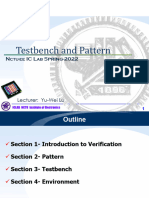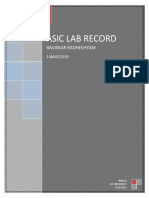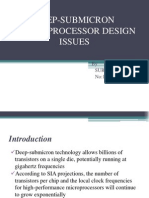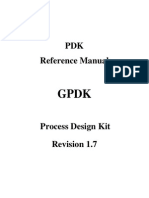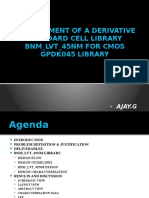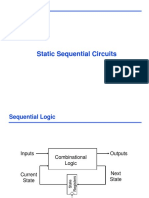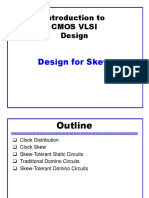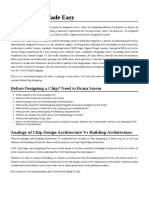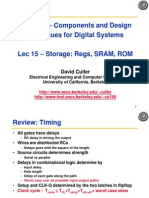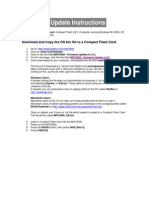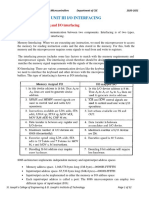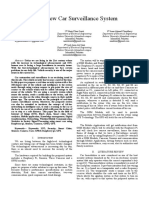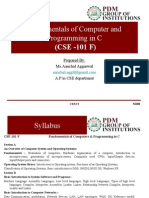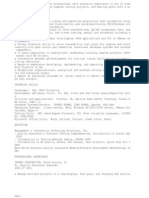0% found this document useful (0 votes)
294 views48 pagesLec05 Introduction To Macros and SRAM Lint
Section 1 discusses macros and intellectual property (IP). Hard IP refers to memory blocks whose design and layout is fixed. Section 2 describes the behavior and usage of hard IP memory blocks. It explains that SRAM has faster access than DRAM but less density. The document provides an example of how to generate a 600-word, 8-bit memory block and discusses the necessary number of address and data pins. Section 2 concludes with an overview of memory compiler tools for generating memory netlists, layouts and models from specifications.
Uploaded by
yanjia8161100Copyright
© © All Rights Reserved
We take content rights seriously. If you suspect this is your content, claim it here.
Available Formats
Download as PDF, TXT or read online on Scribd
0% found this document useful (0 votes)
294 views48 pagesLec05 Introduction To Macros and SRAM Lint
Section 1 discusses macros and intellectual property (IP). Hard IP refers to memory blocks whose design and layout is fixed. Section 2 describes the behavior and usage of hard IP memory blocks. It explains that SRAM has faster access than DRAM but less density. The document provides an example of how to generate a 600-word, 8-bit memory block and discusses the necessary number of address and data pins. Section 2 concludes with an overview of memory compiler tools for generating memory netlists, layouts and models from specifications.
Uploaded by
yanjia8161100Copyright
© © All Rights Reserved
We take content rights seriously. If you suspect this is your content, claim it here.
Available Formats
Download as PDF, TXT or read online on Scribd
/ 48
